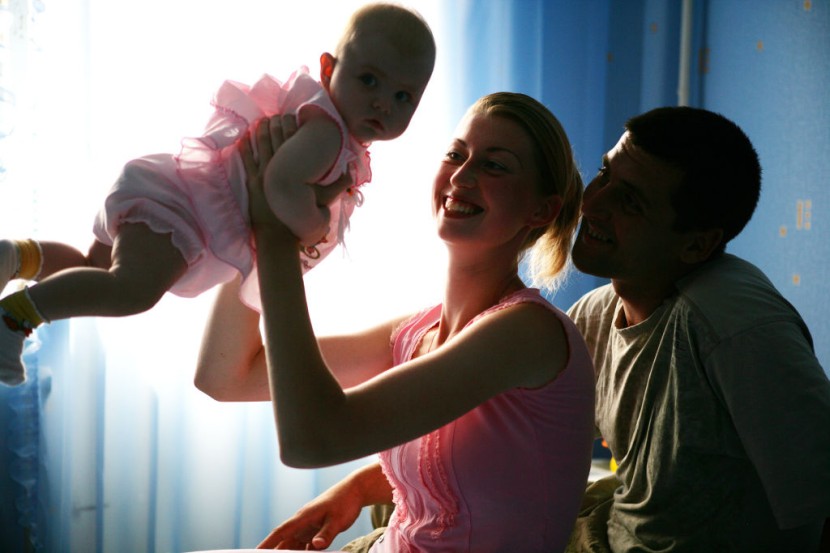
Scientists have been studying HIV infections in infants. It has long been a mystery why HIV infection spreads from mother to baby in the womb in some cases but not in others. But now, a team of researchers from Weill Cornell Medicine and Duke University has discovered a vital clue about it, as well as treatment hints for blocking the infection in infants.
Study finds data linking HIV transmission from mother to infant
Researchers find data linking mother-to-child HIV transmission to unusual forms of the virus in the mother's blood. It can evade widely neutralizing antibodies (bnAbs), an emerging method of treatment that can suppress a wide variety of HIV strains in a review published in the medical journal PLoS Pathogens. Per Ani News, these HIV variants also have main genetic signatures, according to scientists.
The results suggest a way to determine when HIV will be transmitted from mother to infant and point to interventions that may help deter such transmission, said the researchers.
At the same time, the findings suggest that treating HIV-positive pregnant women or new mothers with bnAb therapies may have the unintended consequence of enabling the growth of resistant strains, increasing the likelihood of mother-to-child transmission. "Our findings suggest that vaccines or treatments for HIV-infected pregnant and nursing women should be created to prevent the formation of these resistant variants. It can reduce the risk of HIV transmission to the infant," said senior author Dr. Sallie Permar, chair of pediatrics at Weill Cornell Medicine and pediatrician-in-chief at New York-Presbyterian Medical Center.
And where the mother is infected and untreated, the risk of infection to the infant is less than 50%.
Scientists believe that the mother's immune system and the HIV strains present in her blood play a role in whether transmission happens. However, pinpointing the root of transmission risk has proven difficult, not least because antiretroviral (ART) drug treatment, which is now standard for most HIV-positive people, is likely to skew any existing patient trial outcome.
Read Also: Antiseptic Throat Spray, Malaria Drug Cut COVID-19 Infection Risk, According to Researchers
Finding HIV variants in mothers is complicated
Dr. Permar's team isolated HIV variants transferred from mothers to their infants in one series of tests. They discovered that these transmitted HIV variants were about 30 percent less susceptible to the mothers' plasma, the antibody-containing fraction of the mothers' blood, than non-transmitted variants from the mothers' blood. Meanwhile, the distinction between transmission and non-transmission seemed to be attributed, at least in part, to HIV variations that cause the virus to evade maternal antibodies.
It was not easy to find some HIV escape variants in the mothers, as per Big News Network. HIV variants in transmitting mothers and HIV variants in non-transmitting mothers were equally vulnerable to maternal plasma. At last, the researchers looked at the genetic sequences of HIV variants from transmitting and non-transmitting mothers. They discovered that many genetic signatures were linked to transmission vs. non-transmission.
These signatures were often linked to the unusual opportunity to evade neutralization by a panel of bnAbs in any case. The latter are antibodies discovered in a few HIV-positive people, which have inhibited a wide range of HIV strains. They are now being used as HIV therapies.
Researchers found the treatment to prevent HIV infection in infants
According to EurekAlert!, 150,000 babies are infected with HIV per year, but the risk of infection from mother to baby is less than 50 percent. As a result, scientists are always trying to figure out why some infants get infected and others are not.
It will explain why HIV-positive pregnant women, who are being monitored for the virus, would also transfer the virus to their infants, whether the infant is in the womb, delivered vaginally, or breastfed. Researchers were able to identify variants that were linked to transmission and non-transmission this way.
Researchers claim that adding an "adjunct" to existing antiretroviral treatment is the best way to eliminate HIV transmission from mother to baby entirely, Medical Xpress reported. Researchers are worried that by merely applying blanket therapies to variants and bnAbs to combat the virus rather than treating the variants unique to each mother, antibody-resistant strains of the virus would develop. As a result, babies will continue to be HIV-positive.
© 2025 HNGN, All rights reserved. Do not reproduce without permission.








